臺灣正努力要在2030年成為雙語國家,這意味著我們學英文的方法勢必要有所突破。光是學文法、背單字顯然不夠。英文學習必須情境化,才能培養出學生使用英文的自信。但在學校上課時間有限,如何讓學生真正習得這個語言?「內容語言整合學習」Content and Language Integrated Learning (CLIL) 提供了一個解決辦法。我們可以讓學生透過英文接觸其他科目的內容。透過學習內容的過程,學生同時也吸收了語言本身。
CLIL是個很實用的教學法,特別是對於那些原本對英文較缺乏興趣的學生,因為他們的興趣很可能是在歷史或科學之類的其他科目。而對於英文程度中上的學生,CLIL能幫助他們以貼近現實語境的方式提升語言能力,同時學習有價值的內容。
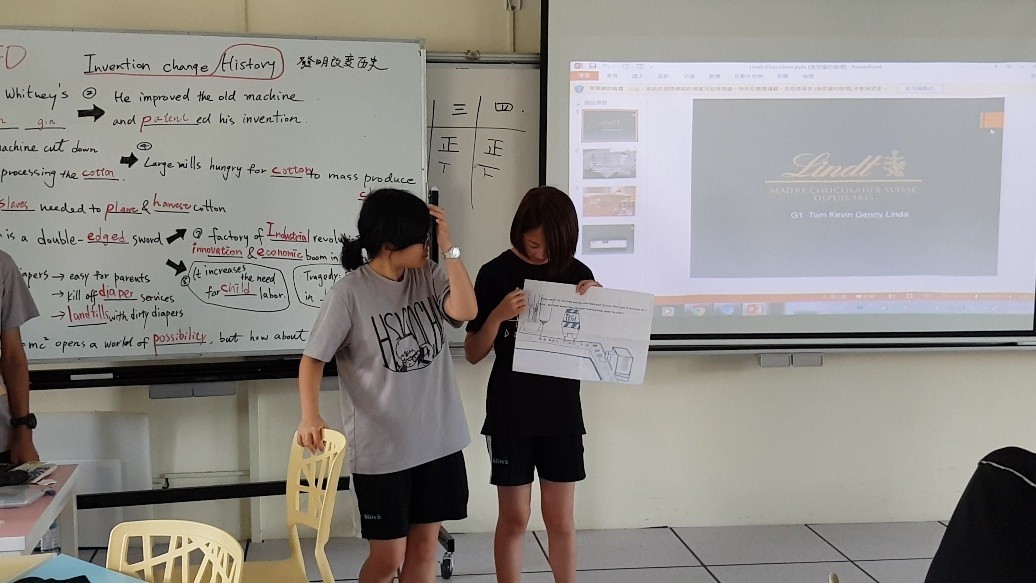
「跨科學習」在臺灣還很新,但其實在英國已經流行超過十年。我還在英國教小學時,我們的課程主題就很廣泛,從熱帶雨林到外太空。不同主題可能有共同的核心概念,讓學生透過多樣的方式學習內容和語言。這個方法能帶來「螺旋式學習」,讓學生不斷以不同的方式接觸先前遇到的單字及觀念。這對我當時的教學格外重要,因為我班上學生說的總共有二十三種不同的語言,有些學生甚至不會說英文。跨領域的課程設計可能聽起來令人卻步,但關鍵第一步就是找到你的共備夥伴,他不是教英文科,但他教的科目你也有興趣。你們也需要有友好的關係,這樣在合作過程中彼此才較容易傾聽對方的想法。第二步就是找尋你們不同科目之間的交集。
我曾在北大高中開設英文小說課。當時我帶領學生讀完整本的Charlie and the Chocolate Factory,並在課堂上做了許多跨領域的閱讀活動。這些活動不但是小說文本的延伸,且應用了其他學科的知識。例如小說中,巧克力工廠的工人是一群叫做Oompa-Loompa的小矮人。書中描述這群人是工廠老闆Willy Wonka從熱帶叢林運送過來的,他們喜歡吃可可豆。Oompa-Loompa 的家鄉可能影射的就是位於非洲的可可豆產地。於是讀過小說相關章節後,我用一張世界地圖讓學生了解關於可可豆的產地、運送路線及巧克力的製造國。這就是地理科的跨域。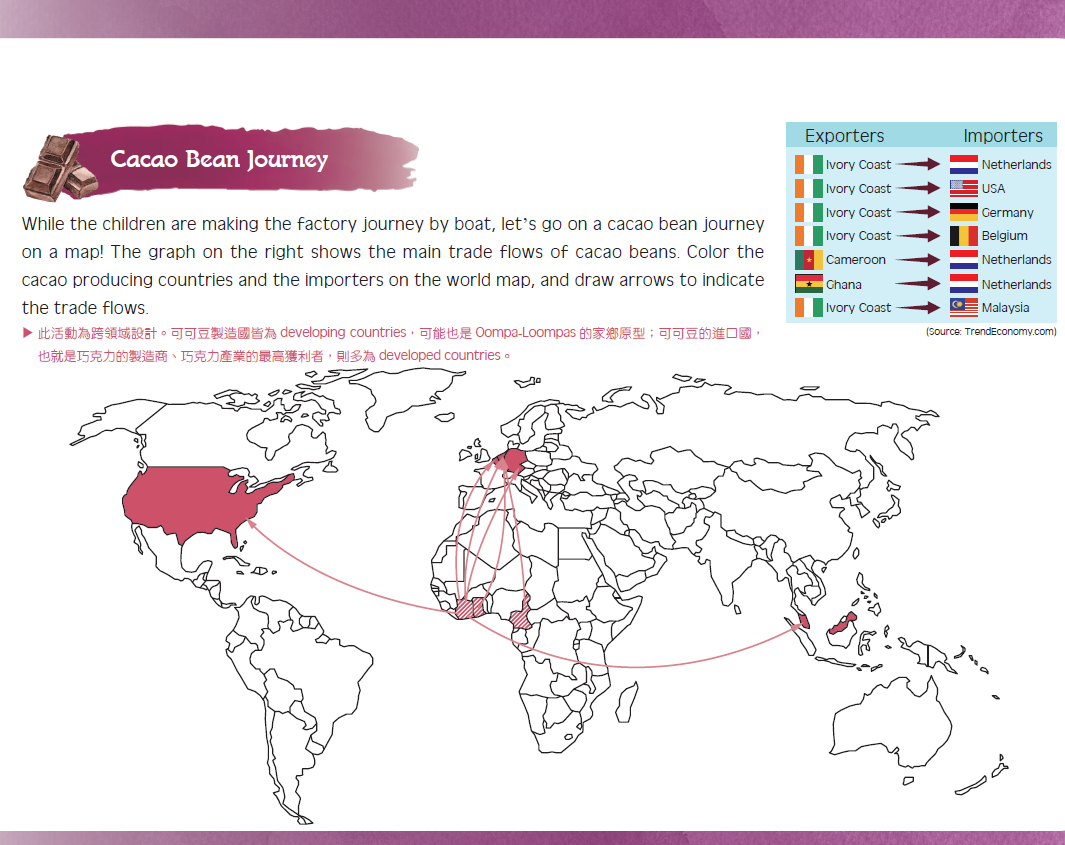
▲此活動Cacao Bean Journey收錄在《英文小說解讀攻略:冒險篇》第十回。https://www.sanmin.com.tw/Product/index/008949039
透過這個活動,學生會意識到開發中國家與已開發國家的貿易關係。這就是所謂國際觀的培養。還能透過這個活動討論到公平貿易以及其對生產者與消費者的影響,並可讓學生辯論不同觀點,練習英文口說。從這個活動延伸出去,還能讓學生運用批判性思考,想想看消費者是否有責任為遠在地球另一端的可可豆農人付上工資的代價?是否應該提高巧克力售價來支持農人?
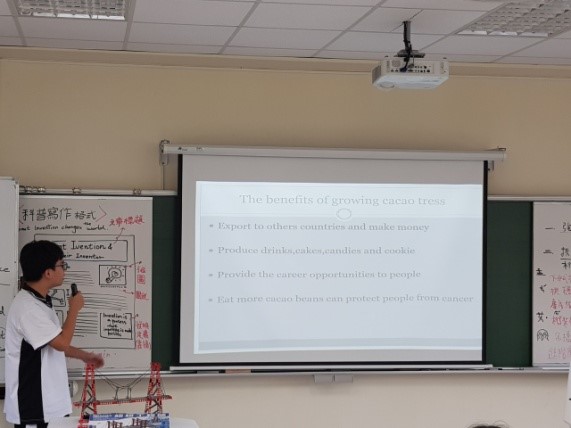
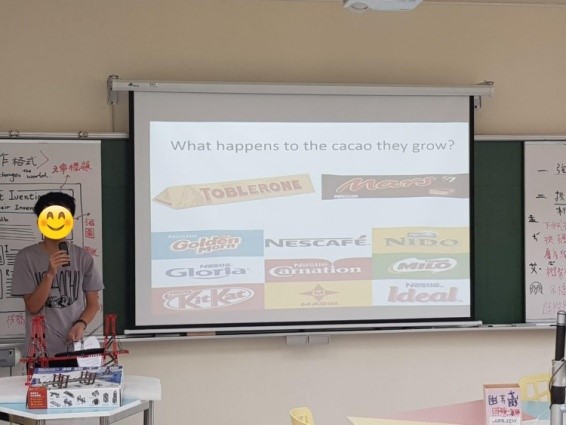
▲學生完成Cacao Bean Journey活動後,輪流上臺分享關於對巧克力生產與貿易的看法。
成功的英文跨領域課程,能讓學生在不知不覺的情況下習得語言。課程重點會放在所跨域的科目內容,以及批判性思考或溝通表達技巧的培養。跨領域學習能讓程度中下的學生也能參與課程,同時讓程度偏高的學生獲得提升。另外,跨域教學時需要融合多元能力的訓練,包括理解能力、溝通能力及簡報能力。活動的多元性能讓每個學生找到自己有興趣、有共鳴的部分,最終獲得學習的成就感。
Guy老師的英文原文
Cross-curricular Learning—Crafting New Opportunities in the Curriculum to Learn Both Content and English
Taiwan’s push to become a bilingual country in 2030 means there is greater focus on original methods of learning English. It is no longer simply learning grammar and memorizing words. Learning English must be put in context, with the goal of making people more confident to use English.
With limited time for English in school, one way of learning in an authentic manner is to learn another subject’s content through English. Content Integrated Language Learning (CLIL) provides a method to learn English via the content of another subject.
I believe this is particularly useful for students who have little to no interest in English, but are interested in another subject such as History or Science. For other students who are already at an advanced level, they have the opportunity to improve in a more natural way; while also learning valuable content.
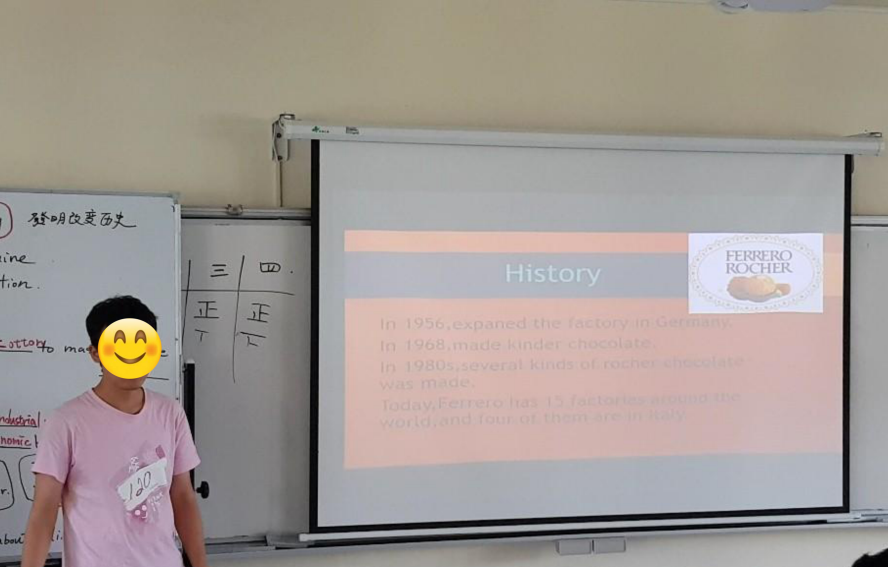
Although cross-curricular learning is new in Taiwan, it has been popular in the UK for over 10 years. During my time teaching Primary school in the UK we taught topics which encompassed all the subjects including rainforests and space. All the topics had the same overarching theme, thus allowing the students multiple opportunities to learn new content and language. This method allows for spiral learning, giving the students multiple opportunities to review vocabulary and concepts they’ve already encountered; yet seeing them from a different perspective. This was particularly important as there were 23 languages spoken in my class and some students spoke no English.
Although it may seem daunting when designing a cross-curricular lesson in Taiwan, the best thing to do is find a co-worker whose subject you’re interested in and who you are also friends with. This makes it easier to collaborate as both of you are more willing to listen to each other’s ideas. Then, try to find areas of overlap between your subject’s content.
When I taught at Bei Da High School, I taught English through novels. I had students read the whole book of Charlie and the Chocolate Factory, and I did lots of interdisciplinary reading activities in class. These activities are based on the text, and they involve knowledge of other subjects. For example, when we read about Oompa-Loompas, the little workers Willy Wonka took from tropical forests, I showed students a world map. Oompa-Loompas love cacao beans, and we can actually infer from the text that their Loompaland may be in Africa, the place cacao is produced. Then I had students think about how cacao is distributed and turned into chocolate for consumption. This activity then involved geography.
The activity not only allows the students to think about the trading relationship between developing countries and developed countries, thus broadening their global outlook, a key component of the new curriculum. It also allows for discussion about Fair Trade and the positives and negatives for consumers and producers. It allows the students to practice speaking skills through debating. In addition, students are able to use critical thinking to question whether it is their responsibility to pay the salary of somebody in a distant country. Are they willing to pay more for chocolate in order to support somebody else?
A successful interdisciplinary course is a method of learning English unconsciously. Greater focus should be placed on the other subject’s content and the skills that can be developed, such as critical thinking and effective communication. Interdisciplinary learning is a method which engages lower learners, while at the same time pushing advanced students. It is crucial that students are given opportunities to practice a number of skills including comprehension, communication, and presentations. This variety allows all students to find something they enjoy, relate to and ultimately succeed at.
附件:全文PDF
